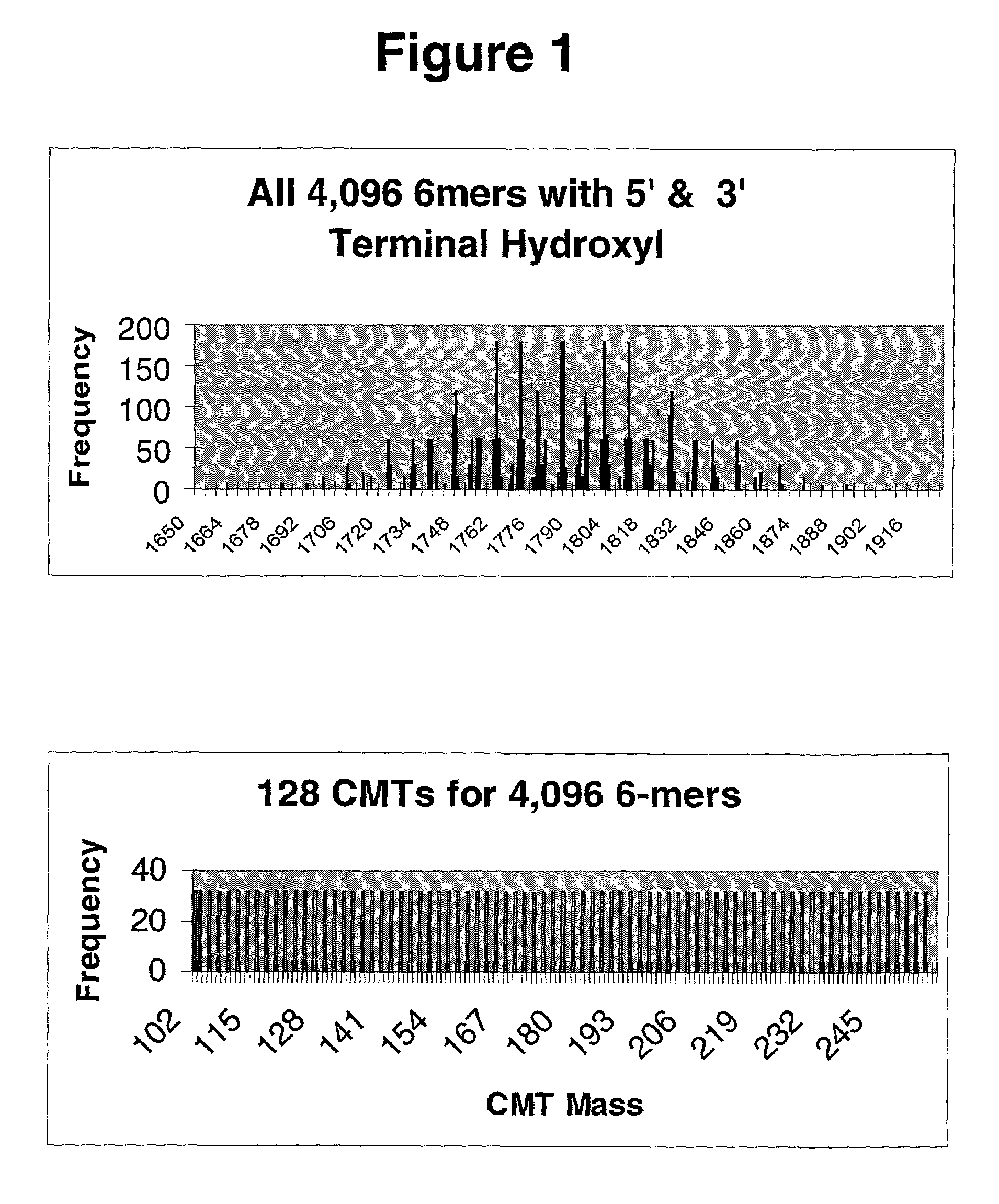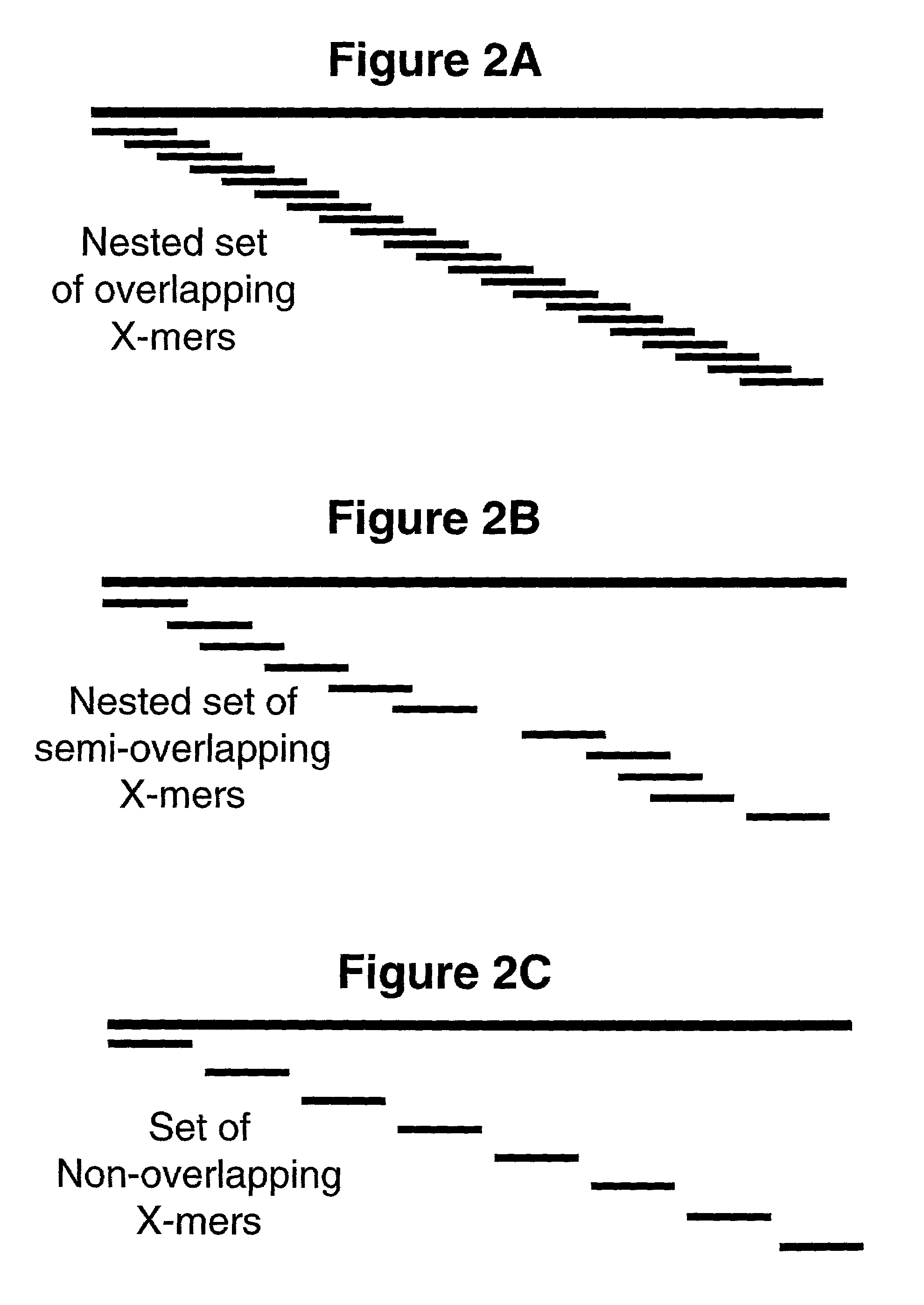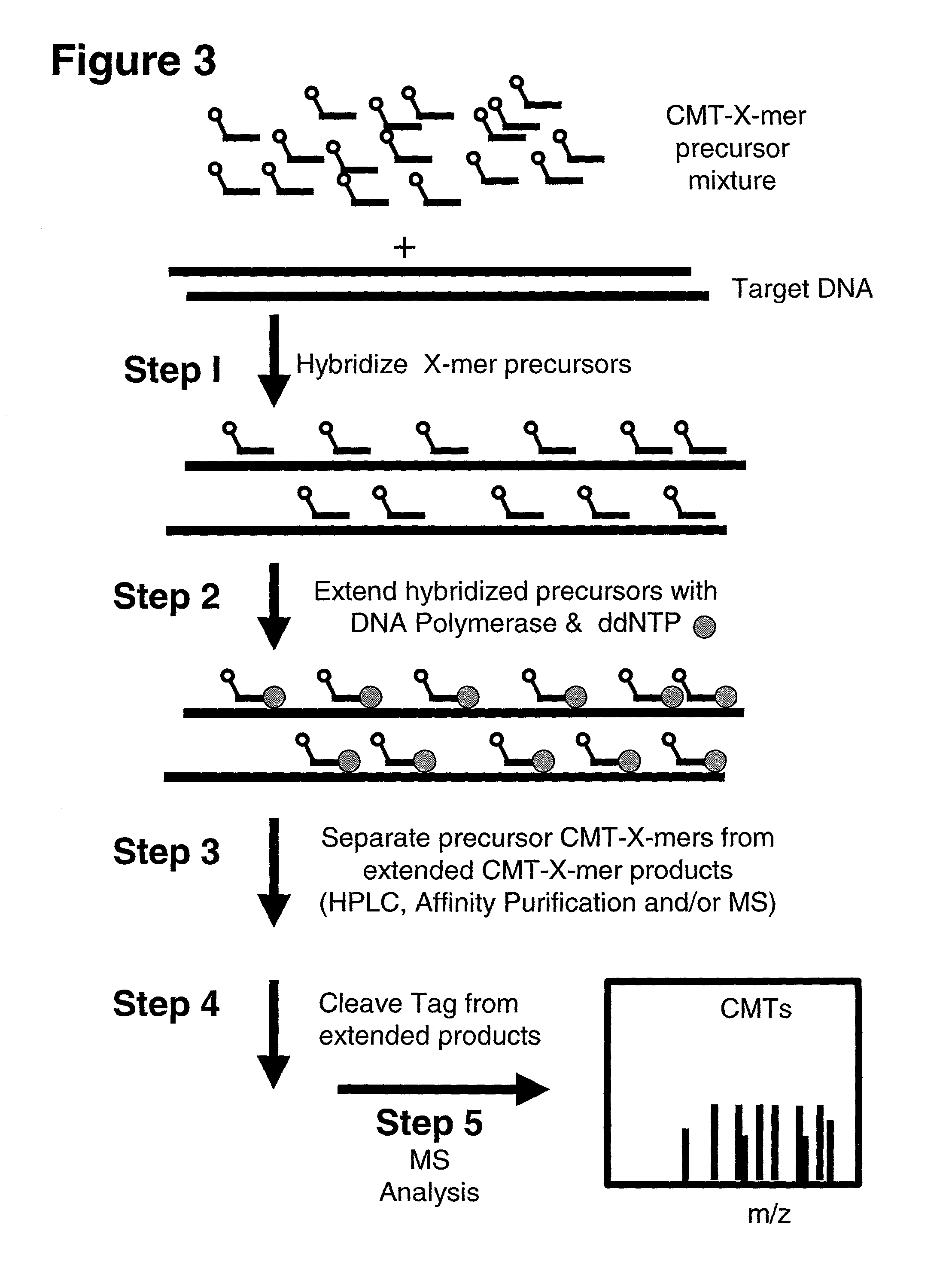Method and reagents for analyzing the nucleotide sequence of nucleic acids
a nucleotide sequence and mass spectrometry technology, applied in the field of methods and reagents for analyzing the nucleotide sequence of nucleic acids via mass spectrometry, can solve the problems of limiting throughput, limiting the accuracy of reagents, and limiting each techniqu
- Summary
- Abstract
- Description
- Claims
- Application Information
AI Technical Summary
Benefits of technology
Problems solved by technology
Method used
Image
Examples
example 1
Understanding the Power of CMT-PEA as a function of X-mer Composition and Tag Number
[0284]The informational aspects and the effect of various design parameters of the present invention were realized by studying the application of PEA using cleavable mass tagged (CMT) X-mer precursors for heterozygous mutation detection. In this analysis, one randomly draws a sequence of length L and randomly changes (mutates) the middle base. The question is asked whether the sequence variants have a peak in their theoretical assay spectrum that does not appear in the other's (mutants) spectrum. A positive answer means that if this were a true, a mutation could be detected in a normal population assuming a threshold allele frequency and either an integrated or binary (yes or no) reading of the CMT mass spectra.
[0285]FIG. 6 depicts mutation detection success rates using 6-mers and 100 CMTs.
[0286]The different curves represent different set sizes of the total possible number of 4,096 6-mers actually t...
example 2
Theoretical Analysis of a p53 Gene Target Fragment using CMT-PEA
[0287]The following example relates to the CMT-PEA method described above using a region of the human p53 gene sequence as the target nucleic acid sequence. FIG. 7 shows a 62 nucleotide region of the p53 gene with known mutation sites indicated in bold face.
[0288]All of the examples are simulations. Therefore, the specifics with regard to the reaction conditions (i.e. buffer, X-mer and target concentrations, polymerase or ligase type, temperature, etc.) are not relevant here. Interpretation of these examples depends only upon the number of CMTs employed, coverage complexity of the X-mer precursors, the target length and sequence and the type of assay employed. All examples assume that the reactions proceed as they are described throughout the text and indicated in the figures. Importantly, it is assumed that only those X-mers that are exact complements of the target sequence are actually extended. The main purpose of al...
PUM
| Property | Measurement | Unit |
|---|---|---|
| atomic mass | aaaaa | aaaaa |
| pH | aaaaa | aaaaa |
| mass | aaaaa | aaaaa |
Abstract
Description
Claims
Application Information
 Login to View More
Login to View More - R&D
- Intellectual Property
- Life Sciences
- Materials
- Tech Scout
- Unparalleled Data Quality
- Higher Quality Content
- 60% Fewer Hallucinations
Browse by: Latest US Patents, China's latest patents, Technical Efficacy Thesaurus, Application Domain, Technology Topic, Popular Technical Reports.
© 2025 PatSnap. All rights reserved.Legal|Privacy policy|Modern Slavery Act Transparency Statement|Sitemap|About US| Contact US: help@patsnap.com



